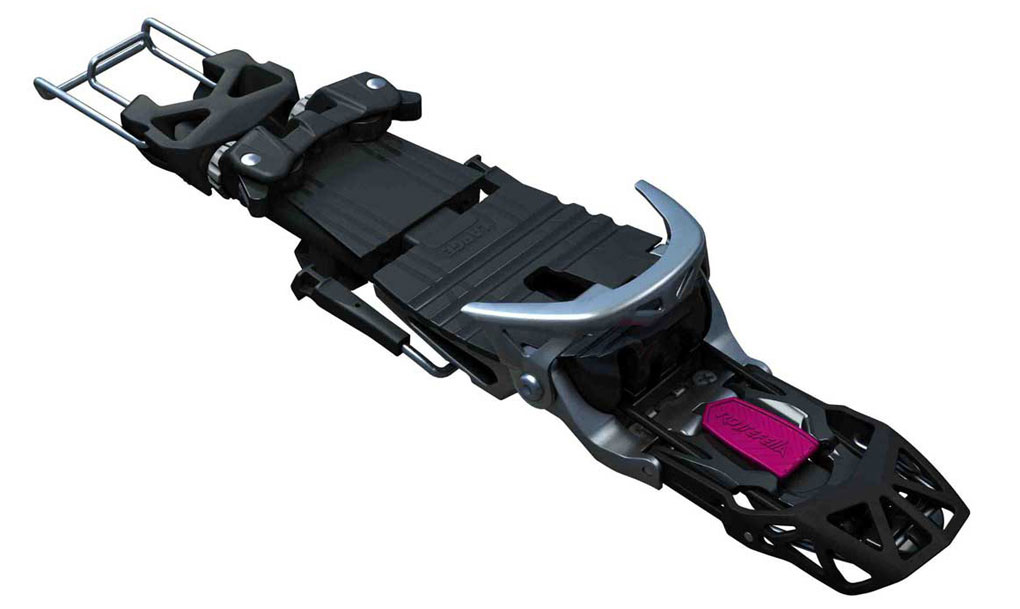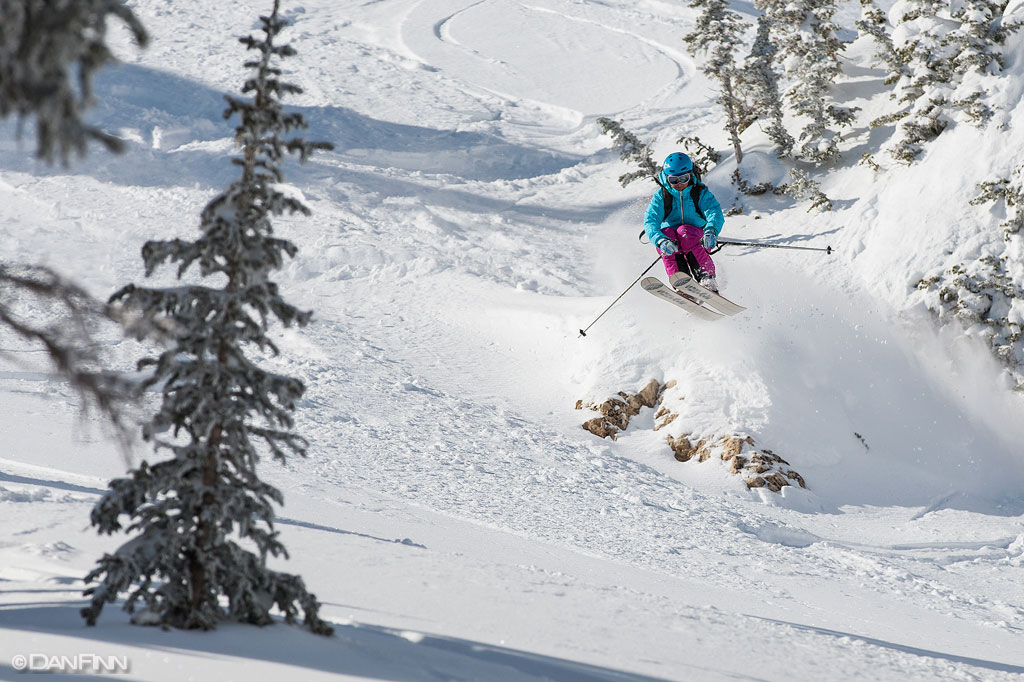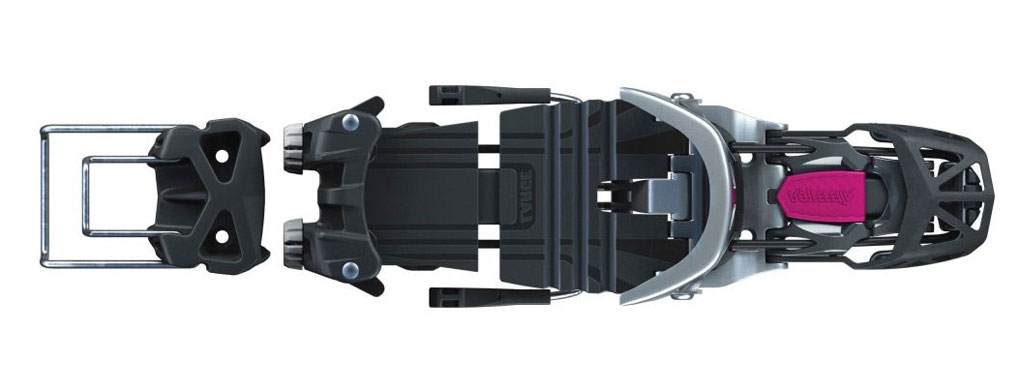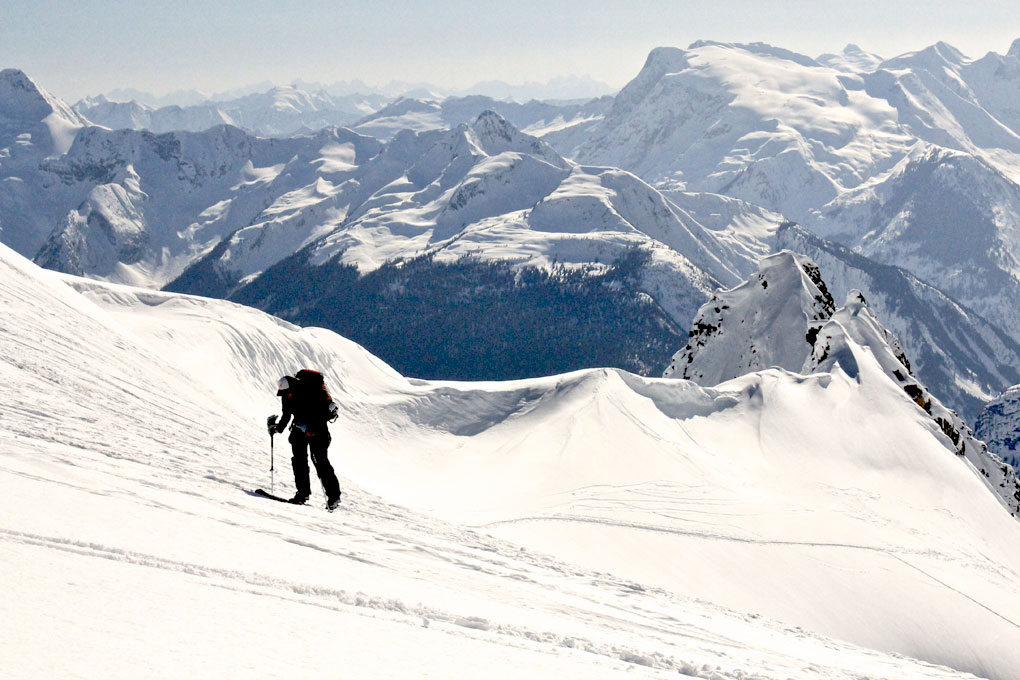 Rotefella NTN Freedom Telemark Binding
Rotefella NTN Freedom Telemark Binding
Weight: 1,500 grams per pair
Height: 25 mm
Rotation: 22 mm behind tip of boot
Walking opening angle: 60 degrees
Heel lifter: 35 mm and 65 mm
Ski brake: standard 110 mm
Skis / Boots: Surface Live Life, 181cm / Scarpa TXPro
Test Locations: Alta Ski Area, Washington and British Columbia backcountry
Days Tested/Test Duration: 20+ days
MSRP: $430
Background: NTN vs. Traditional Tele Bindings
Over the past several years, the Norwegian manufacturer Rotefella has created a completely new type of telemark binding. This system, called NTN (or New Telemark Norm), has notably changed Telemark equipment.
You can read more about the details of the system in our Telemark Skiing 101 article, but it’s worth explain a few major differences between an NTN binding and other popular tele bindings before getting into the specifics of the NTN Freedom.
First, you can step directly into an NTN binding when getting into your skis, rather than bending down to fasten the heel of your boot to your binding, like most traditional telemark systems.
A second perk is that an NTN binding has a lateral release function—if you take a hard enough fall, the bindings unlock from your foot, which can help save your knees from injury and is also a good way to help stay alive if caught in an avalanche. (Though NTN bindings are not DIN- certified release bindings.)
Finally, the NTN binding provides more lateral rigidity than a typical telemark binding by replacing the cable around your heel with a sturdy plastic plate that grips to the sole of your boot. And maximized lateral rigidity is a very sought after trait for aggressive tele skiers who want to have as much control as possible over the micro-movements of their skis.

The one significant drawback to NTN, however, has been the weight.
NTN Freeride vs. Freedom
Rotefella’s first NTN binding, the Freeride, was a hefty 4.1 pounds of binding that also lacked a full free-pivot in tour mode. The result was a cumbersome setup for the uphill, especially when compared to Dynafit Alpine Touring Bindings, which can be half as heavy. So last year, Rotefella released the NTN Freedom as a backcountry oriented alternative for those seeking a lighter binding.
At first glance, the Freedom is just a slimmer, 3.6-pound version of the Freeride binding. But to cut down on weight, some fairly significant changes were made to the bindings construction.

The re-design of the bulky metal piece in front of the toe, which is the lever used to lock the binding onto your foot, is probably the most immediately noticeable difference. This piece has been swapped out for a much slimmer, less solid piece of light aluminum.
The heel riser, which on the Freeride is a thick, white, plastic plate, has been replaced with a smaller box with wire heal-risers for lifts, exactly like what you’d find on TwentyTwo Designs (see our review of the TwentyTwo Designs Axl) or Black Diamond Telemark Bindings.
However, the bulk of the weight has been trimmed on the Freedom by removing the heavy black plate that runs along the bottom of the binding. The downside is that this plate is what enabled you to move one set of Freeride bindings between multiple pairs of skis, making it possible to have just one binding that could be switched to a different pair of skis using this plate. The Freedom does not use this plate, which saves quite a lot of weight, but it means that you are drilling new holes in your skis if you make the switch, and if you have multiple skis, you’ll need more than one binding.
Save this one downside, however, the construction and the feel of the Freedom is a lot more streamlined and less clunky feeling than the Freeride. Despite lighter-weight materials, the binding still feels solid and well made, and generally offers improvements to the construction and feel of the Freeride.
Skinning
When skinning, the Freedom quickly proved its superiority to the Freeride. I could immediately feel how much lighter it was and how much more range of motion I had in tour mode. (The range of motion in tour mode on the Freedom has been increased from just over 30 degrees on the Freeride to 60 degrees.) All this made for longer strides on steep terrain and a noticeably speedier ascent.

To me, this is the uncomplicated part of this review. The weight saving and additional range of motion of the Freedom make a HUGE difference. The rest is just small details, and in some cases, a matter of personal preference.
For instance, the two sets of heel risers (one tall for steep sections, one shorter for mellower uphill) is a handy idea, but one I admittedly hardly ever took advantage of. Getting the lower lift up requires lifting both and then knocking the higher one back down. The extra step takes only an extra second or two, but I usually ending up going with the either the higher one or none at all. But if you find yourself more often on a mellow, sustained ascent, the lower lift might be a really nice feature.
The only noticeable downside came when skinning through deep, wet snow, which occasionally jammed under the plate that attaches to your foot. This minor annoyance usually meant a couple of extra seconds during transitions to jab the snow with my ski pole, else on the ride down my foot wouldn’t quite make it all the way back to the ski, which just felt awkward. Additionally, I needed to be really careful transitioning from tour-mode to ski-mode, making sure the mechanism was really locked into place. Several times, a few turns into a run, I popped back into tour-mode. Now, I take a few extra seconds to hammer the top of my pole down on that mechanism to ensure it is locked, which seems to have solved the issue.

Kate: noticed in your review of the new freedom ntn binding you bemoaned the fact the binding can’t be swapped between multiple pairs of skis. Have you checked out quiverkillers? They can be found at quiverkiller.com and are threaded steel inserts which are mounted into skis and the binding can be moved back and forth from ski to ski just by backing out the binding screws and then switching to the next ski equipped with the quiverkiller system. I have been using quiverkillers this season after a suggestion from a friend and find I can swap out dynafits for ntn freeride with no trouble on the same ski. My quiverkillers were professionally mounted by mike at mammoth mountaineering in mammoth lakes, but people with the right skills can do the mount themselves. The Quiverkiller system does raise the price, but is way, way cheaper than buying multiple pairs of bindings/skis. I have used both bindings for touring and for lift served skiing. So far the system seems totally solid and friends also have had no complaints. BTY, maybe a quiverkiller test/review would be an interesting read.
Joe
Kate. My wife and I have been using the Rotofella NTN bindings for 3 years and I do NOT believe that they have a lateral release function. I had put my boot into the binding and tried to make it release by having people hold the ski and pushing/kicking the boot. No luck. No release/ Am I doing something wrong? Please advise.
Hi, I’ve had NTN Freerides for 10+ years, NTN Freedoms since they came out, Meidjos.
I’ve always released from NTN when needed, never when not.
The only issue I had once was in heavy snow, during a slow rotating fall (slightly torn knee). But I don’t think there are many bindings (even alpine ones) that release in this situtation, when they are set for agressive skiing.
So when in doubt, go faster : they will release.
Jeff, I ski Freerides set to the recommended resistance for my weight (per Rottefella’s instructions) and have yet to release… had a tumble earlier this season and really wanted them to release, but ended up with a twisted knee instead. The bottom line is that I definitely wouldn’t trust them to come off.
I performed my own ad hoc lateral release comparison (not standardized, so I can not give absolute numbers here) comparing the “Fritschi Xenic AT Binding”, “The Meidjo Telemark Binding”, and the “Rottefella Freedom”. The lateral release of the Fritschi was set to 5. The lateral release setting of the Meidjo was also set “low”. The spring tension of the Meidjo was set to 3 out of 5. The boot was flat for the following tests without any further downforce (which would likely increase release forces for telemark setups). The spring tension of the Rottefella was also set to 3 out of 5 (blue box).
The Fritschi and the Meidjo released roughly at the same force. Combining the Meidjo second toe with the Fritschi heel (yep, weird setup, albeit note that Meidjo also has its own AT heel) increased release force by about 10% (this is the result what I was really after).
I was not able to release the Rottefella Freedom. I had to stop where there was about 60% force increase compared to where the Fritschi did release. At that point the range of the available force meter bottomed out (equiv. 50kg !) and also the whole setup reached its limit.
From experience: I never had a release with the Rottefella in more than 5 years of usage. I had releases with the old 75mm system (Targa) in the past.
My conclusion: the Rottefella does not release or at least only with unacceptable high forces.
DO NOT TRUST RELEASE ON FREEDOM OR FREERIDE.
They don’t. At least never when you need them too. I jacked my knee up once on a no release. Healed and kept skiing.
Shortly after I spiral fractured my fib.
Sold them this year and switching to the Meidjos.